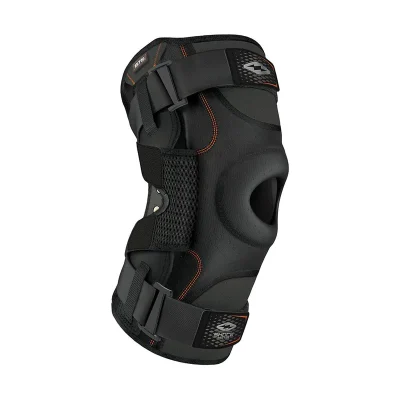Project Report For Knee Braces
Introduction
Project Report For Knee Braces is as follows.
A knee brace is a type of medical equipment used to support and shield the knee joint. Knee braces come in different shapes and sizes, and they are used for a variety of reasons, such as preventing knee injuries, reducing knee pain, and promoting healing after knee surgery.
The best knee brace for your condition depends on how painful your knees are. Your healthcare professional will advise you on the best knee brace for you and when to use one. Despite their potential benefits, knee braces may end up doing more damage than good.
For varied knee problems, different knee braces are required. Following knee surgery, your doctor may advise you to wear a certain type of knee brace. Some doctors may recommend a different form of knee brace instead of surgery to heal a ruptured knee ligament. If your front knee pain persists despite stretching and strengthening exercises, you may require one. Braces do not appear to be particularly beneficial in preventing knee injuries. Consult your doctor if you want to test a knee brace.

Types Of Knee Braces
- Prophylactic Knee Braces: These are knee braces that are used to prevent knee injuries. They are typically worn by athletes who engage in high-impact sports such as football, basketball, and soccer. Prophylactic knee braces are designed to provide support to the knee joint and reduce the risk of injury during sports activities.
- Functional Knee Braces: These are knee braces that are used to support the knee joint after an injury. They are typically worn by people who have had a knee injury such as a ligament tear or meniscus tear. Functional knee braces are designed to limit the range of motion of the knee joint and provide support to the injured area.
- Unloader Knee Braces: These are knee braces that are used to reduce pain and discomfort in people who have knee osteoarthritis. Unloader knee braces work by shifting the weight-bearing load from the affected area of the knee to the healthier parts of the knee joint. This helps to reduce the pressure on the affected area and reduce pain.
- Rehabilitative Knee Braces: These are knee braces that are used after knee surgery to help promote healing and rehabilitation. Rehabilitative knee braces are designed to limit the range of motion of the knee joint and provide support to the knee during the healing process.
- Patellofemoral Knee Braces: These are knee braces that are used to treat patellofemoral pain syndrome. Patellofemoral pain syndrome is a condition that causes pain and discomfort around the kneecap. Patellofemoral knee braces work by realigning the patella and reducing the pressure on the kneecap.
Get Completely Custom Bankable Project Report
Market Potential of Knee Braces
The global knee braces market size was estimated at USD 1.5 billion in 2018 and is expected to witness a CAGR of 4.3% during the forecast period.
The growing burden of osteoarthritis, increase in target population, and launch of cost-effective and easy to wear braces are the major growth propellers for the market. Moreover, a rising number of sports-related injuries is also anticipated to drive the growth.
The increase in demand for knee braces can be attributed to factors such as increased awareness of the importance of using preventative support systems during sports activities, an increase in accidents with high rates of knee injury, and an increasing aging population. I have. , leading to a high prevalence in arthritis patients.
The main market participants are supplying knee braces to end consumers directly through online networks, which is what is driving the market growth. This has made these products easily available, which is boosting the market growth. On the other hand, the exorbitant cost of knee braces limits the market expansion.
Knee braces are typically sold through medical stores, hospitals, clinics, and online platforms. The Indian orthopedic market is highly fragmented, with many local and international players competing for market share.
The knee braces market in India is expected to grow at a steady pace over the next few years, driven by increasing awareness of knee injuries and their prevention, rising healthcare expenditure, and a growing aging population. In addition, the increasing popularity of sports and physical activities among the younger population is expected to create a demand for knee braces for injury prevention and rehabilitation.

